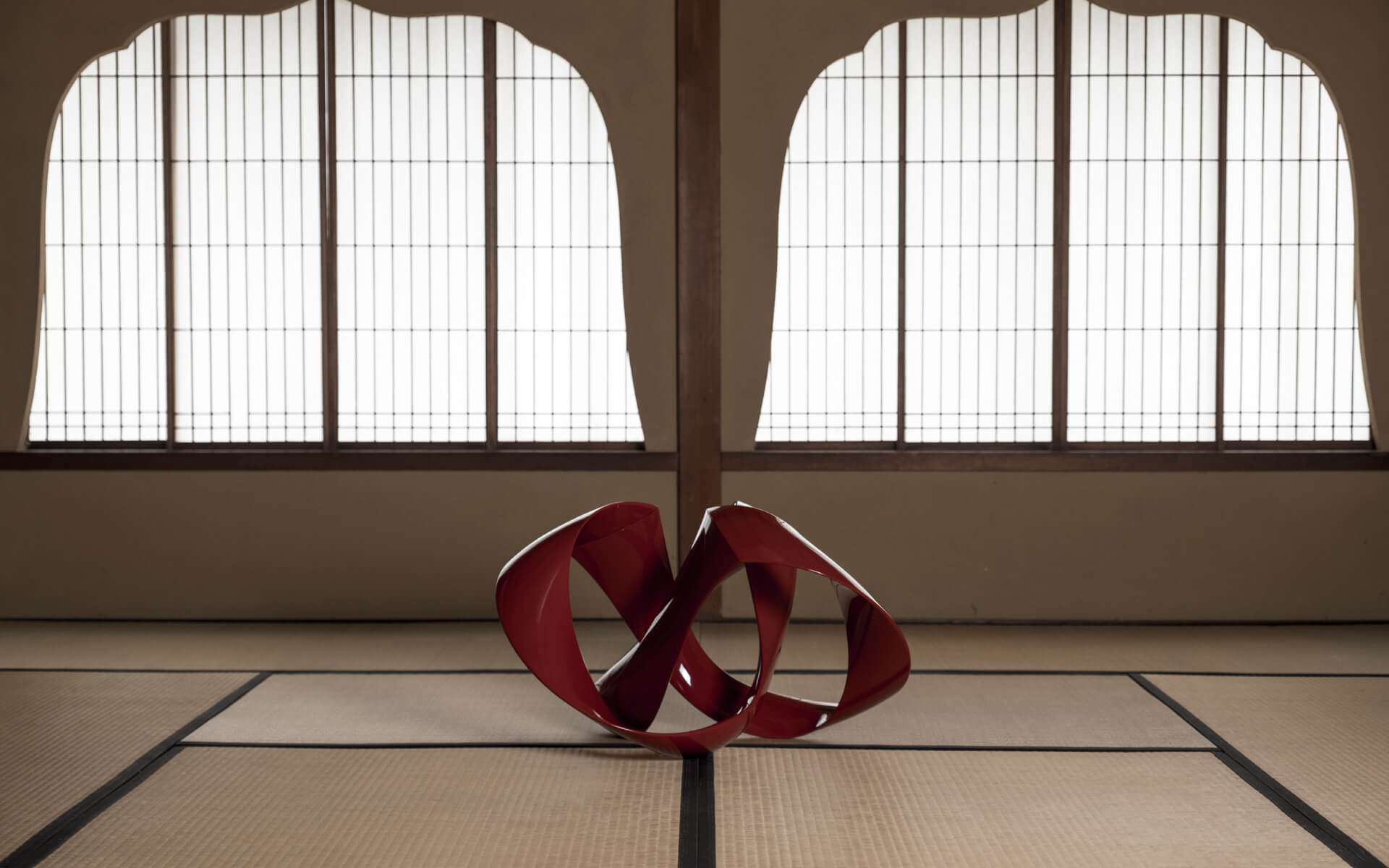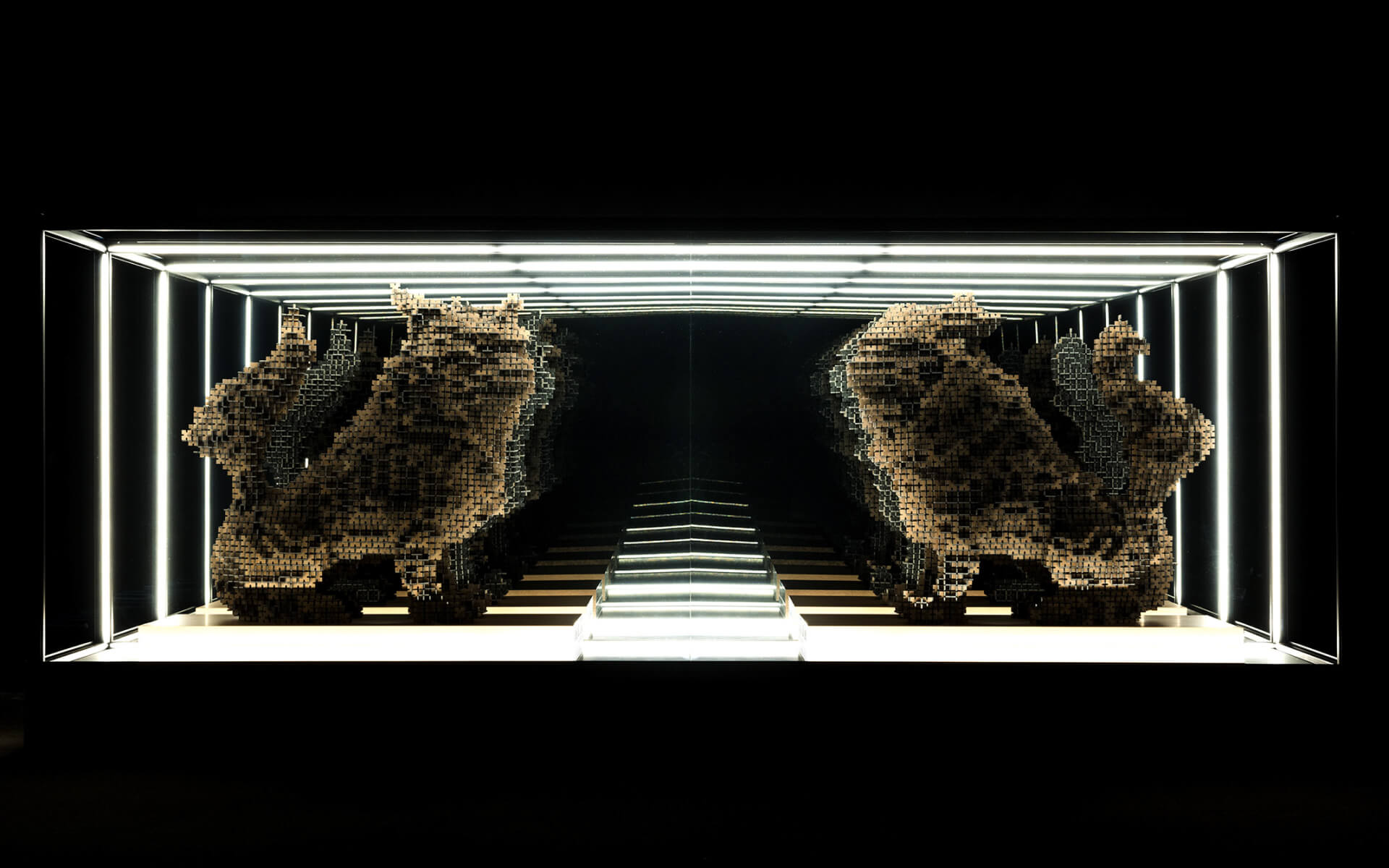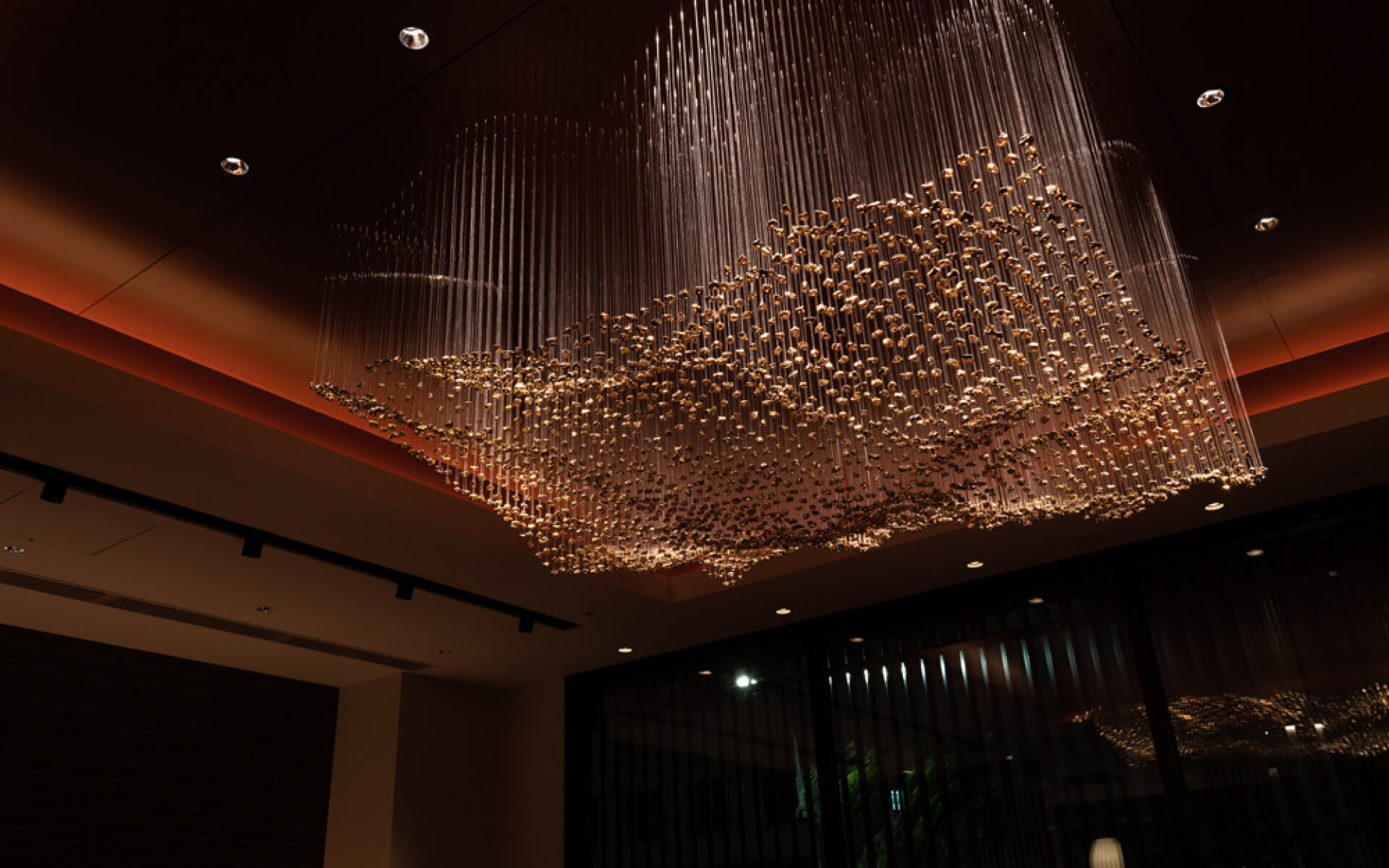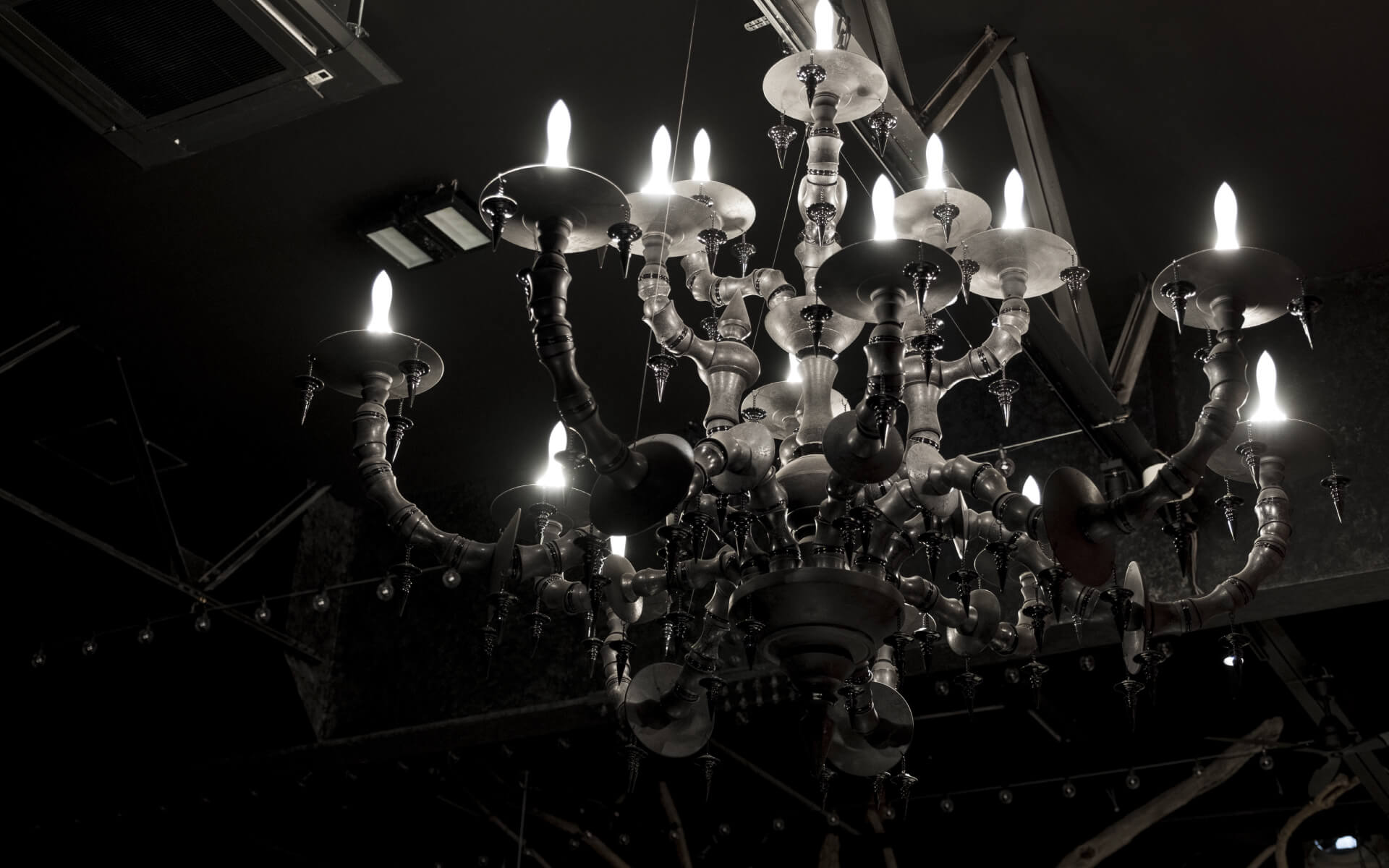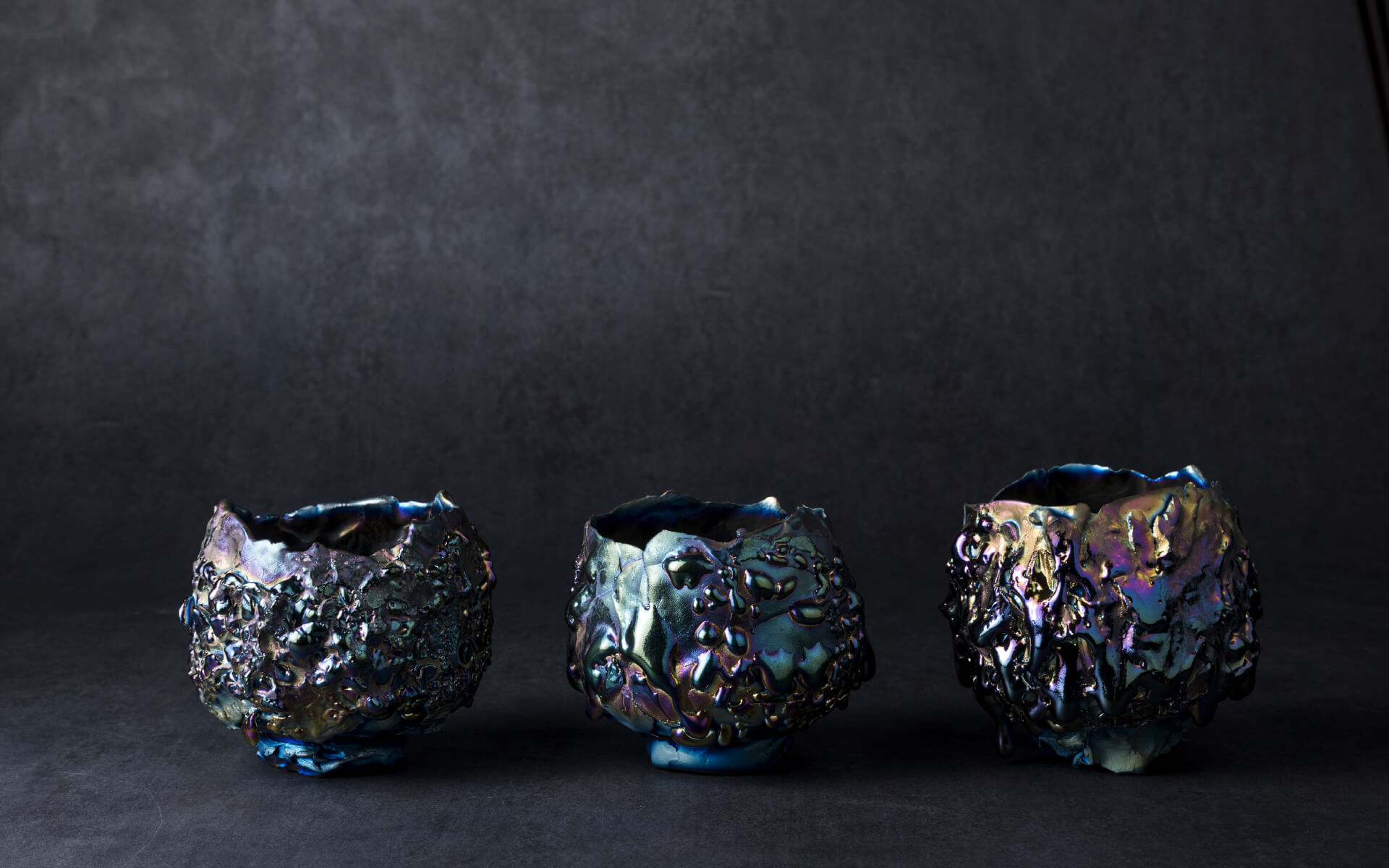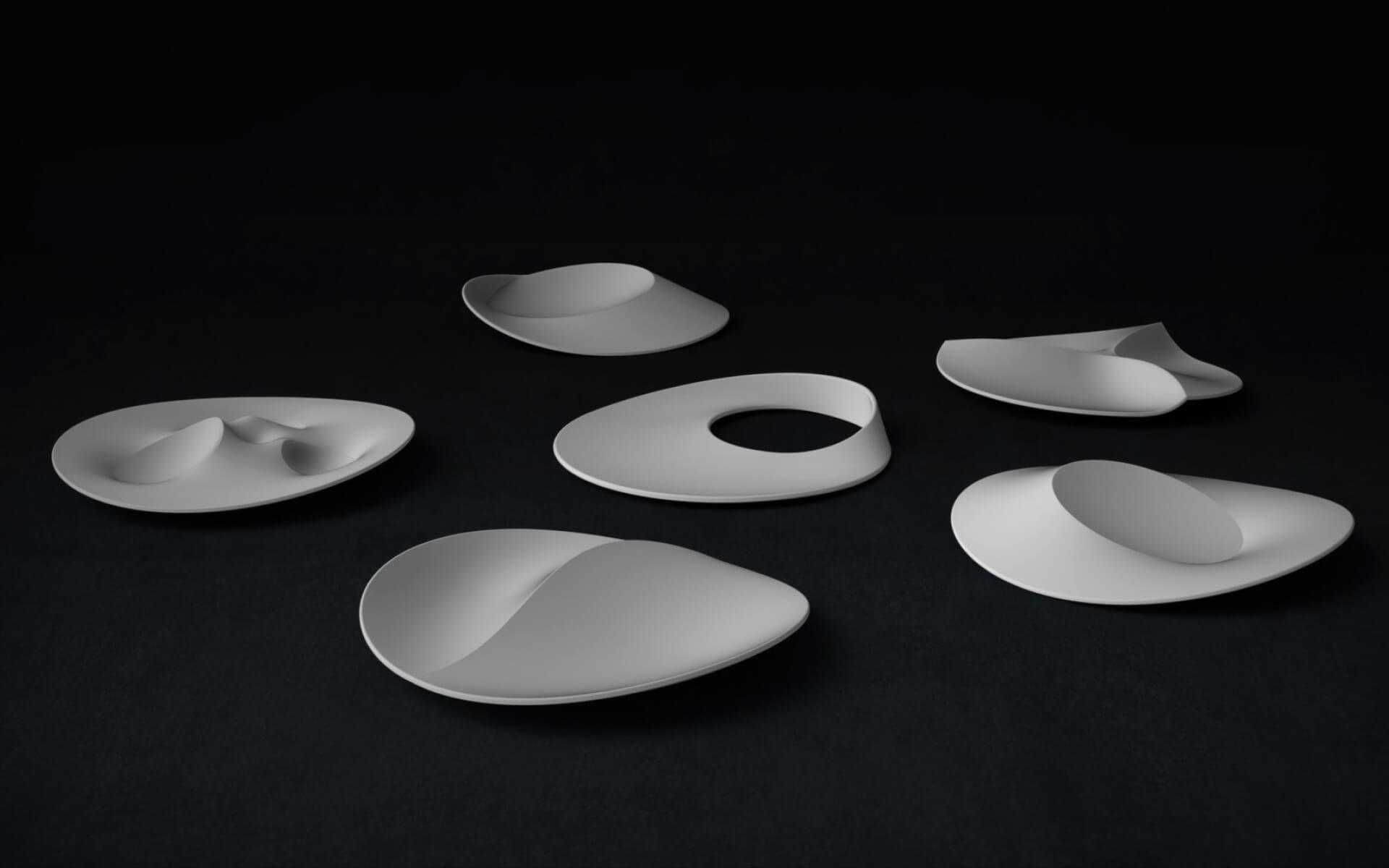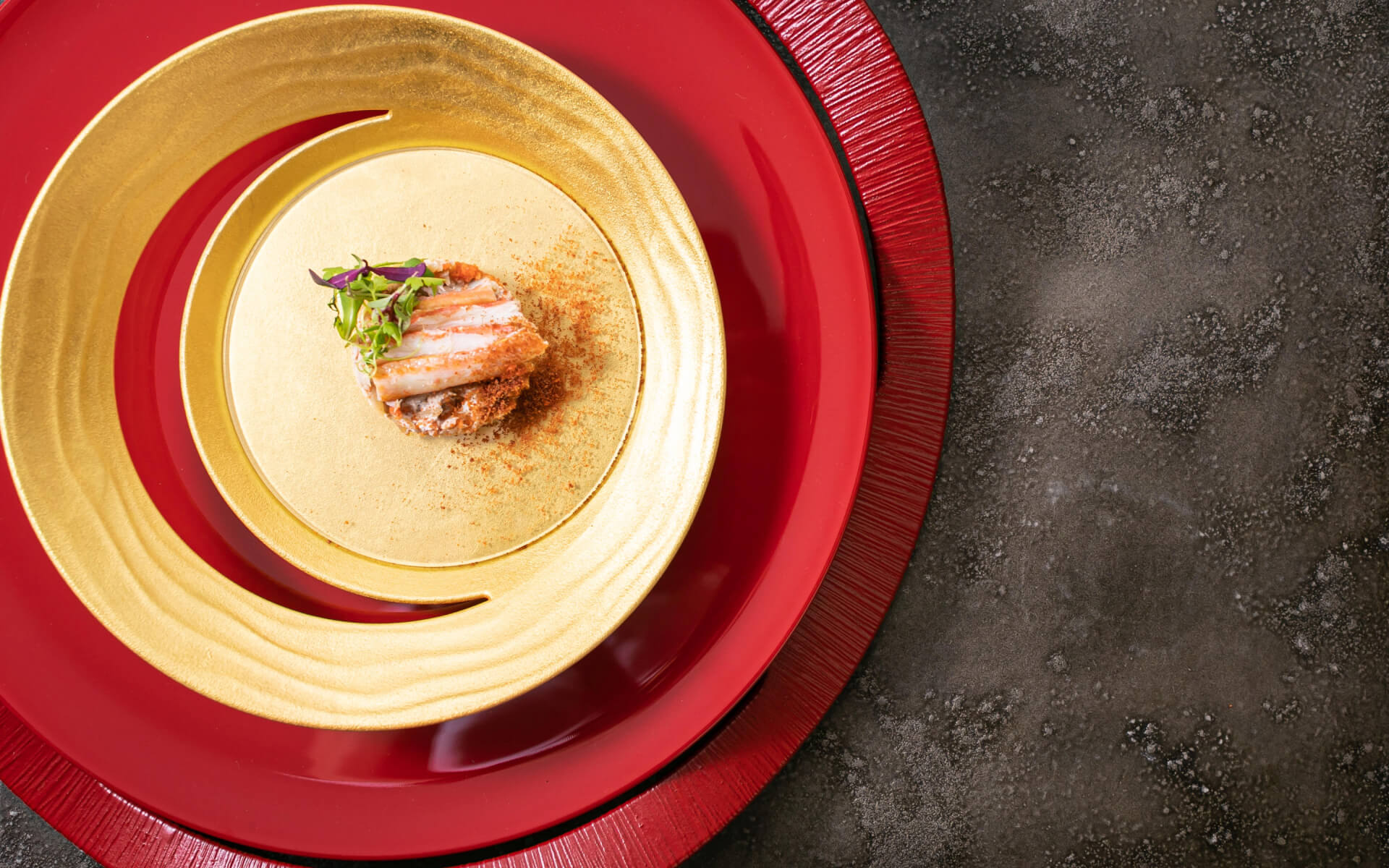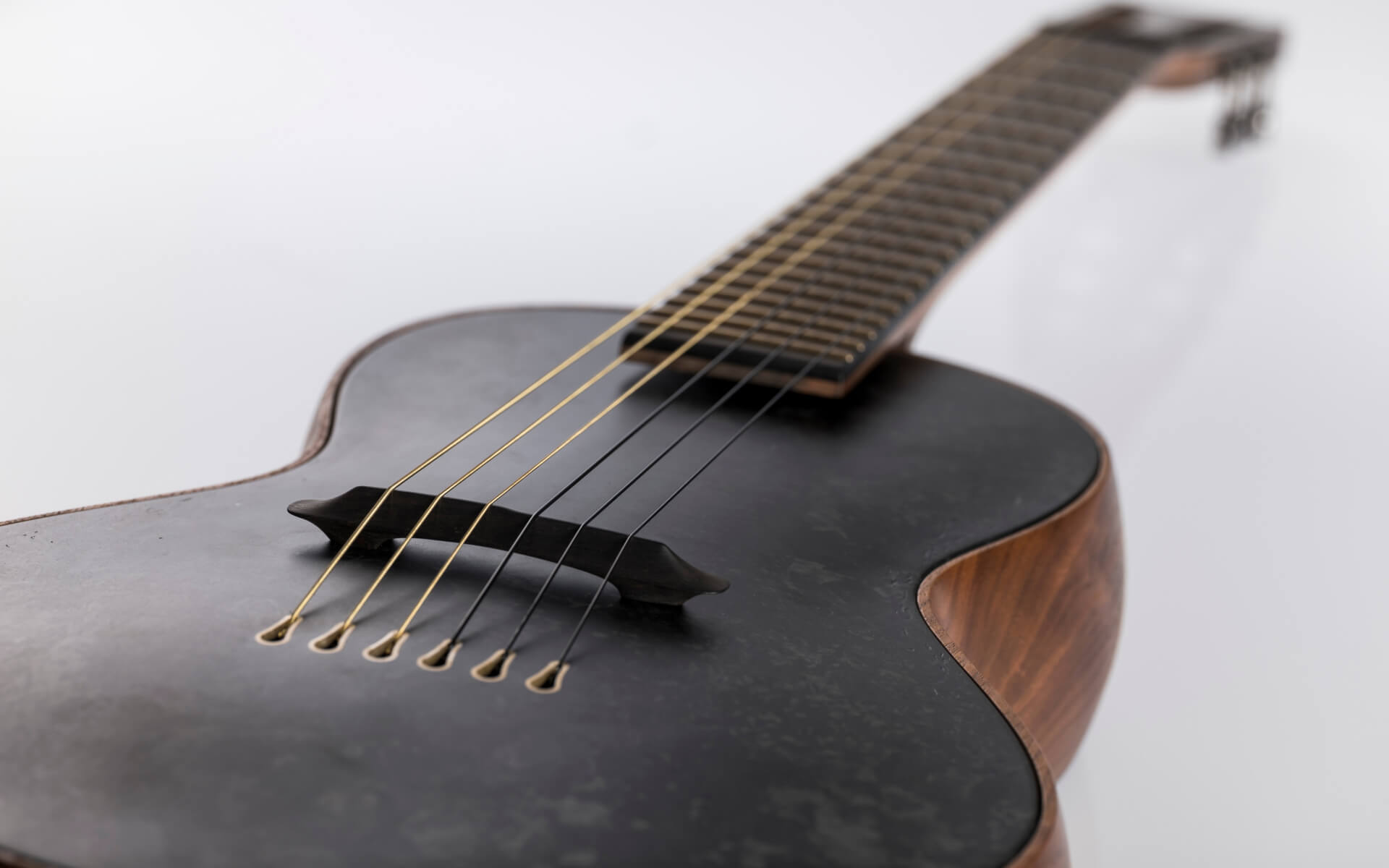WORKS 02Shingi
japan?
KENPOKU ART 2016 出品 2016年に開催された茨城県北国際芸術祭に出品したアートピースです。
英語で「japan」とは、漆を意味します。 その起源を縄文時代にまで遡る漆は、塗料や接着剤として日本の文化を担ってきました。 しかし江戸時代からはじまった中国やベトナムからの輸入は明治以降に加速し、現在では97%を超え、前世紀のウレタン塗料 の登場で、和漆は希少なものとなっていきました。
メビウスの形をした本作は、3つの同じ形状のパーツを組み合わせて構成されています。 これらにそれぞれ、高い透明度を誇る国産奥久慈の漆、中国産の漆、そして漆を模したウレタン塗料を塗り分け、組み合わせ対 比させています。 注意深く見比べても漆の違いを見分けることは困難です。そしてそもそも見分けることに意味があるのでしょうか? 現在、日本で「漆器」と表記されている廉価な製品のほとんどが「ウレタン塗装」による仕上げで、日常的に様々な食事シーンで 見かけます。
まるで日本を代表する工芸素材であるかのような「japan=漆」の価値とは一体何なのでしょうか?
本作は答えを見出すことや、漆の価値を否定することが目的ではありません。 我々日本人が漆の価値とは何なのか、今一度鑑賞者と議論するキッカケを造形しました。
[素材]
日本漆、中国漆、ウレタン
[サイズ]
W685mm D650mm H410mm
[パートナー]
漆塗り:石蔵 政嗣
英語で「japan」とは、漆を意味します。 その起源を縄文時代にまで遡る漆は、塗料や接着剤として日本の文化を担ってきました。 しかし江戸時代からはじまった中国やベトナムからの輸入は明治以降に加速し、現在では97%を超え、前世紀のウレタン塗料 の登場で、和漆は希少なものとなっていきました。
メビウスの形をした本作は、3つの同じ形状のパーツを組み合わせて構成されています。 これらにそれぞれ、高い透明度を誇る国産奥久慈の漆、中国産の漆、そして漆を模したウレタン塗料を塗り分け、組み合わせ対 比させています。 注意深く見比べても漆の違いを見分けることは困難です。そしてそもそも見分けることに意味があるのでしょうか? 現在、日本で「漆器」と表記されている廉価な製品のほとんどが「ウレタン塗装」による仕上げで、日常的に様々な食事シーンで 見かけます。
まるで日本を代表する工芸素材であるかのような「japan=漆」の価値とは一体何なのでしょうか?
本作は答えを見出すことや、漆の価値を否定することが目的ではありません。 我々日本人が漆の価値とは何なのか、今一度鑑賞者と議論するキッカケを造形しました。
[素材]
日本漆、中国漆、ウレタン
[サイズ]
W685mm D650mm H410mm
[パートナー]
漆塗り:石蔵 政嗣
The art piece exhibited at the 2016 International Art Festival of Northern Ibaraki. "japan" in English can mean lacquer and lacquer was originated in the Jomon period (circa 13,000 to 400 BC) and it has played roles as paints and glue in Japanese craft cultures since then. However, now over 97% of lacquer is imported from China and Vietnam after the start of import during Edo period(1603-) , and Japanese lacquer has become very rare and more and more precious along with urethane coating technology development in the last century.
Many of mass pricing products with a sticker "lacquer" recently sold in Japan are made from urethane and they have commonly used in daily meals.
This artwork is shaped like a Moebius and composed of three parts with identical shapes, three different lacquer and lacquer-like urethane coating are put for comparison - Made in Japan Okuji lacquer, Chinese lacquer, and urethane coating. How many people can tell the difference at a glance? Is it worth pointing out differences first of all? What is the real value of [japan]?
This art was not for finding right answer nor denying traditional lacquers at all but simply providing an opportunity to debate regarding the value of [japan].
[Material]
Japanese Urushi , Chinese Urushi , Urethane
[Size]
W685mm D650mm H410mm
[Partners]
Urushi:Masatsugu Ishikura
Many of mass pricing products with a sticker "lacquer" recently sold in Japan are made from urethane and they have commonly used in daily meals.
This artwork is shaped like a Moebius and composed of three parts with identical shapes, three different lacquer and lacquer-like urethane coating are put for comparison - Made in Japan Okuji lacquer, Chinese lacquer, and urethane coating. How many people can tell the difference at a glance? Is it worth pointing out differences first of all? What is the real value of [japan]?
This art was not for finding right answer nor denying traditional lacquers at all but simply providing an opportunity to debate regarding the value of [japan].
[Material]
Japanese Urushi , Chinese Urushi , Urethane
[Size]
W685mm D650mm H410mm
[Partners]
Urushi:Masatsugu Ishikura



